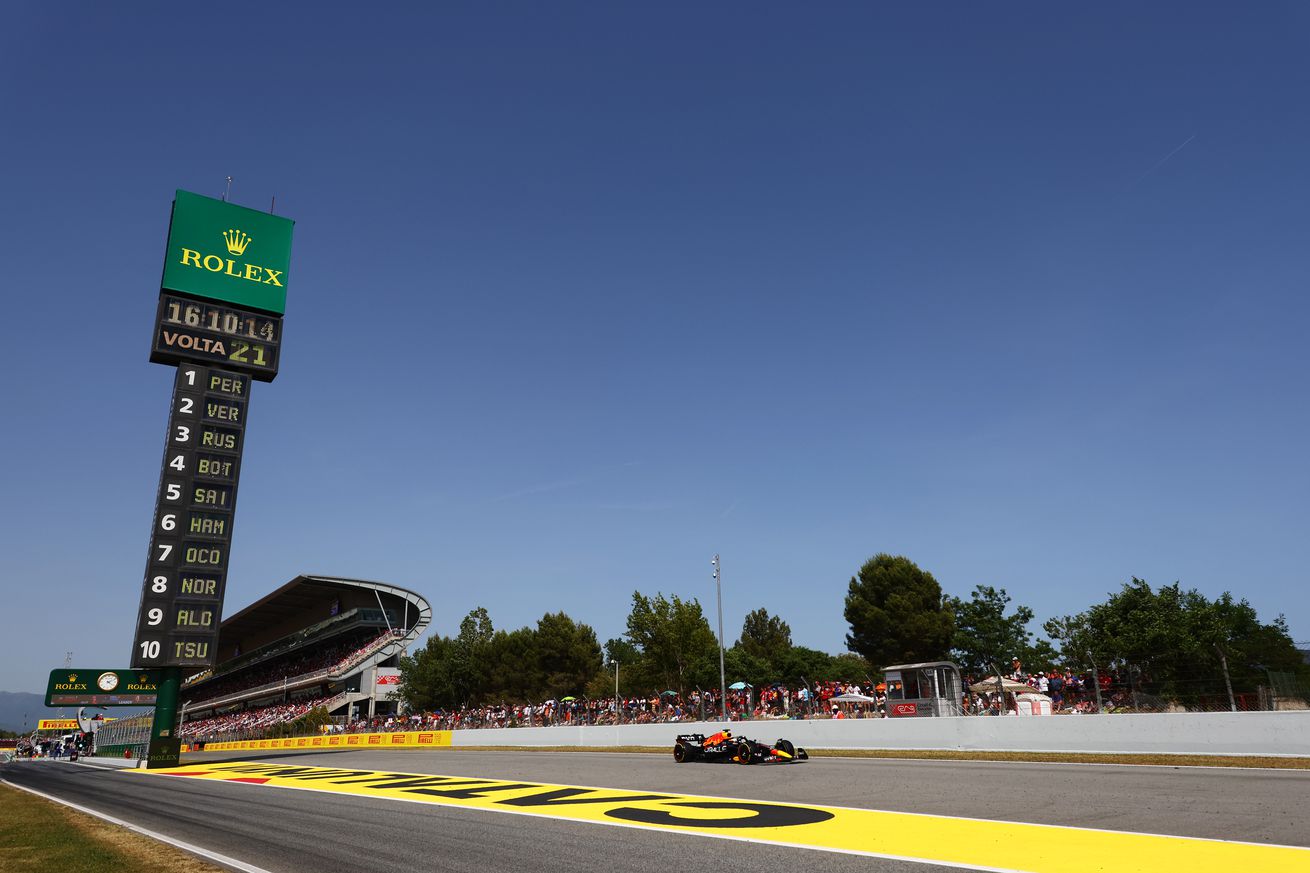Photo by Mark Thompson/Getty Images
A voyage of discovery awaits the drivers as F1 heads to Barcelona
Formula 1 continues its European swing this weekend with the 2023 Spanish Grand Prix. The circuit in Barcelona is a familiar one for drivers and teams, as it was the site of pre-season testing before the 2022 campaign, and a number of teams such as Alfa Romeo underwent pre-season shakedown sessions at the track ahead of this season.
However, this year’s Spanish Grand Prix will look a little different.
The drivers will find a revised configuration to the track for this year’s Grand Prix. A chicane that was introduced back in 2007 — which tasked drivers with navigating a quick, and tricky, right-left-right sequence of turns — has been eliminated. Instead, the track has returned to its original configuration, and new barriers have been installed around the final two corners, both of which can be taken at higher speeds.
Using this aerial photo of the circuit from F1.com, we can see the changes. The portion of the track in question is on the left side, with the previous chicane in red. The new configuration is highlighted in green:
Opinions on the new design are mixed, with some drivers looking forward to potential overtakes, while others are more reserved.
“Oh yes, I never liked that chicane,” said Lewis Hamilton ahead of the Monaco Grand Prix. “I never liked it, and now we will come out of Turn 12, and we’ll probably be flat through the last two corners, it’s going to be great four our necks, great for tyre wear and yes, it’s going to be pretty fun.”
Alex Albon of Williams hopes that the reconfigured circuit could make for more overtaking.
“Get rid of the low-speed corners, and we’ll be good,” said the Williams driver ahead of Monaco. “I think we’ll be OK. I hope the racing is better, we need a circuit where we can overtake.”
Kevin Magnussen of Haas, in a Q&A provided by the team ahead of Barcelona, had this to say about the changes.
“I think it’s going to be exciting to try the original layout without the chicane. It always seemed like a great sequence of corners – the last two corners – with it being so high-speed,” said Magnussen. “Let’s see what that does for overtaking, I have a feeling it might be slightly better for overtaking but time will tell.”
Lando Norris, however, is a bit more skeptical.
“Yeah, even more physical on the neck. So I’m not looking forward to it at all. Whether it’s going to make better racing or not, I hope so,” said Norris ahead of Monaco.
“It’s a tricky last corner, to be honest, it’s not going to be flat-out,” the McLaren driver added. “Might become more of a management race, even more than what it is, and it’s already a huge management race. We’ll see, maybe it pushes everyone to do more one-stop, two-stop kind of thing.”
Yuki Tsunoda elaborated on the new layout in AlphaTauri’s media preview, along with a playful jab at Fernando Alonso.
“I’ve driven the new layout in the simulator – I think Alonso must be the only driver who remembers it from the past! The last chicane has gone which means it will be a much faster lap than in previous years. I’m not sure if it will make overtaking any easier or create more chances, but I’ll be interested to see,” said the AlphaTauri driver.
Tsunoda also believes that the new configuration could impact tyre wear.
“Having two fast corners at the end of the lap could affect tyre degradation, which is always high here, so it will require a different approach, even if tyre degradation is less this year,” added Tsunoda. “In the past, in qualifying, your tyres could be finished before the end of the lap, but the new faster corners at the end mean less requirement for good traction out of the turns. Let’s wait and see.”
One thing is clear, and that is the fact that drivers will need to sort this new configuration out in practice ahead of this weekend’s Grand Prix. “I am very curious as we go to Barcelona,” said Valtteri Bottas, who saw Barcelona up close in Alfa Romeo’s shakedown session this winter. “The track layout has changed and there will be an element of discovery to make in practice.”













